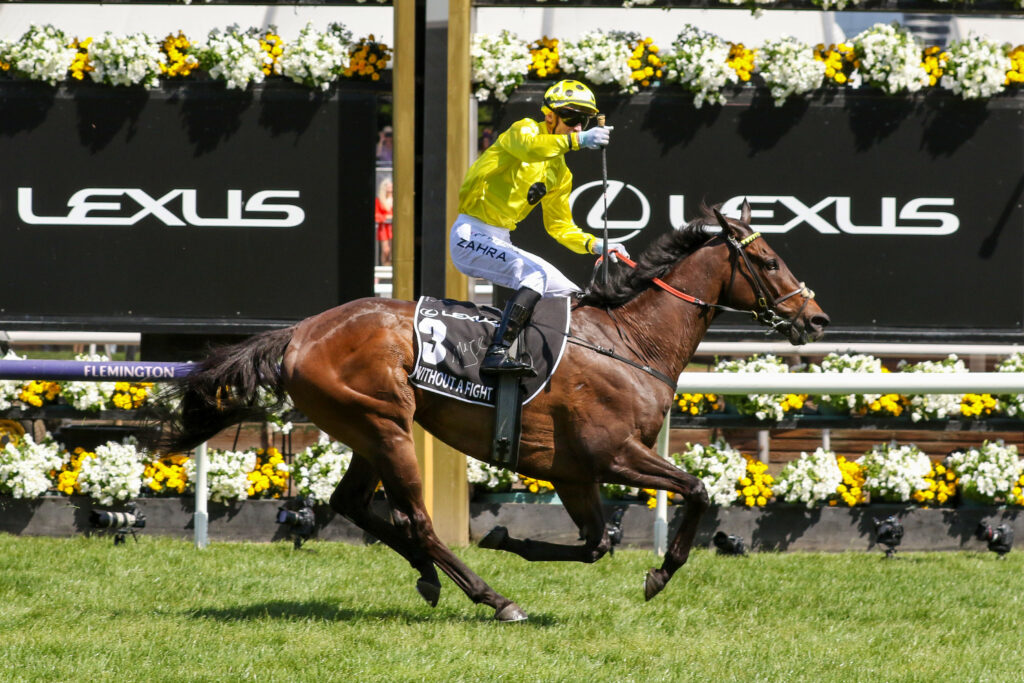Singapore real estate prices are so shocking, the city-state is bulldozing this racecourse for the land

- by Admin
- October 4, 2024
After 182 years of horseracing, Asia’s oldest turf club in Singapore will farewell the sport this weekend in a bittersweet finale before the land is handed over for housing.
The closure, first announced last year, marks a major blow for horseracing in Asia and comes just seven months after another regional racing hub, the Macau Jockey Club, shut down amid dwindling revenues.
Singapore’s send-off will see a sold-out, 10-race event billed as a celebration of the sport’s rich history in the city, which in its heyday twice included Queen Elizabeth II track-side to present trophies.
Queen Elizabeth II and Princess Anne were at the Singapore Turf Club’s 1972 Queen Elizabeth II Cup. (Supplied: Singapore Turf Club)
Saturday’s final race day is expected to be busy, with ticket allocation for the grandstand exhausted well in advance, but it comes after years of declining attendances and vanishing sponsors.
“It is going to be sad because it’s all we’ve known for the last 20 to 30 years, and it’s such a fine track that they’ve got here,” said Australian horse trainer Steven Burridge.
Despite owners, trainers, jockeys and other staff being given 16 months to prepare, the closure of the club is still sensitive.
Anger and disappointment from some involved in the racing scene over the handling of the closure still lingers, with many now uprooting their lives to other countries to continue working.
“I would have liked to have done a couple more years if we kept racing, but I’m going to go back to the Gold Coast for semi-retirement,” said 69-year-old Burridge, who is one of only two Australian trainers remaining for the final lap.
Plenty of space will be available for new homes. (AFP: Jason Quah/ST/SPH Media)
Jockeys, horses and trainers head abroad
No Australian has embraced racing in Singapore as much as Burridge.
He first rode as a jockey there in 1988, then spent three years as an assistant trainer in the city in the 1990s, when the track was more centrally located in the district of Bukit Timah.
He’s called Singapore home since 2004 and has won three Queen Elizabeth II Cups, one Gold Singapore Cup, and has seen the sport go through ups and downs.
“You’d get decent crowds that were quite young, and the horse owners from the old days in Bukit Timah were still investing,” he said.
“But as they’ve got older, they’ve got out of it, and there’s no new generation coming through.”
Steven Burridge has 11 horses running in the final races at the Singapore Turf Club. (ABC News: Steve Wang)
Multiple trainers cited a ban on under-18s attending race days along with restrictions on advertisements for racing as contributors to the sport’s decline in Singapore.
“I don’t know if we’ll all end up crying or what, because it feels so unreal to a lot of us,” said Donna Logan, a New Zealand trainer who has been based in Singapore for seven years.
“Everyone’s feeling quite down knowing that the end of racing in Singapore is this week.”
Following the government’s announcement last year of the impending closure, Logan returned to New Zealand to start a stable in Auckland.
Some local jockeys have moved on to Malaysia or southern China, but the costly task of selling and relocating hundreds of horses to stables in other countries has been difficult.
Faded glory
While Saturday’s final Grand Singapore Gold Cup will see a packed grandstand, race days at the site in Kranji near the Malaysian border are usually much quieter.
Unlike the bounce back in post-pandemic track attendances in Hong Kong, Singapore’s racing scene is renowned for the small but loyal patronage of “uncles” — older men who usually spend race meets gathered around the televisions inside the grandstand.
The stands were mostly empty at a recent race day. (Supplied: Adam Hancock)
It wasn’t always this way.
When the Turf Club was moved in 2000 to its current location in Kranji, 30,000 spectators turned up to the grand opening.
But a gradual decline in attendances in recent years was cited by the government in its decision to take back the 124-hectare site, which will be officially relinquished in 2027.
The other main factor in the decision is housing, a constant challenge in a city of almost 6 million people on land smaller than Canberra.
Singapore’s government says it will spend the next few years developing a plan, but has promised public housing will be part of the new site.
“In the past, the government has taken back land from golf courses, so it’s not an uncommon way to deal with land scarcity,” said Professor Tien Foo Sing, a real estate specialist in the Business School at the National University of Singapore.
Freeing up space for housing was part of the justification for relocating the Singapore Turf Club from its previous site at Bukit Timah, although a housing plan for that site was only released this year.
“I think there is still plenty of land available, but they want to reserve some of it for long-term planning,” said Professor Sing.
The Kranji racecourse used to draw large crowds. (Reuters: Tim Chong)
One of the most significant urban renewal project is planned in Singapore’s east, with the closure of the Paya Lebar Air Force base set to free up around 800 hectares of land in the 2030s.
Singapore’s government has previously said that project could see up to 150,000 new units built.
When announcing the plan two years ago, then-prime minister Lee Hsiong Loong assured Singaporeans the city wouldn’t run out of space for future generations, and referenced the city’s low birth rate.
“Our problem is not finding the space to build enough flats, nor keeping the flats affordable for Singaporeans, it is having enough babies to grow up and live in them!” he wrote.
Like other densely populated cities in Asia, Singapore has some of the highest property and rent prices in the world.
Cyril Tuzeman, a property agent with 13 years’ experience in Singapore, says the government is keen to ensure locals aren’t locked out of the market for private apartments and houses, which can also be bought by non-residents.
Cyril Tuzeman says the government is trying to keep properties affordable. (ABC News: Steve Wang)
“They’re trying to contain the price growth, they’d rather the price grow 3 per cent a year instead of 15 per cent,” he said.
He believes freeing up the land where the Turf Club sits for more public and private housing is part of a longer-term strategy.
“I’m guessing it’s part of their plan to have enough supply so, when needed, they can just release land, so that they are never constrained in building housing for Singaporeans,” he said.
Eight times more expensive than Sydney
The government in recent years has introduced a stamp duty of 60 per cent on foreigners buying private properties to try to rein in prices, which are currently around 13 to 14 times the median income in Singapore.
That’s a similar average price-to-income ratio to Sydney, and more than Melbourne.
But Australian home owners tend to get much more for their money.
At an average of more than $20,000 for each square metre, Singapore’s private apartments and houses are about eight times more expensive than Sydney.
But what makes Singapore different to other cities is that those sky-high prices only affect about a fifth of residents.
The vast majority of Singaporeans live in public housing, or flats that were initially built in the public scheme, which are much cheaper to buy at about four to five times the median income.
Various subsidies also exist to help first-time buyers purchase newly built units, but strong price growth since COVID for established public housing units, which can be privately sold by owners, remains a challenge.
About 90 per cent of Singapore’s residents own their home. (Reuters: Loriene Perera)
Long-term, Professor Sing believes some other recreational facilities, particularly golf courses, will likely have to close down to accommodate population and housing growth in Singapore.
But the closure of the Turf Club shows it’s not an easy process for those directly affected.
Burridge says he’ll be too distracted on the final race day to get swept up in the emotions.
“Luckily I’ve got 11 runners on the day so I’ll be busy, but probably on Sunday morning I’ll sit down with a coffee and face the fact I have to pack up everything and go,” he said.
“It’s the end of an era.”
The Latest News
-
November 26, 2024Zheng Qinwen to begin 2025 with a new coach for the Australian Open – Will Pere Riba return?
-
November 26, 2024Australia v India: Marnus Labuschagne to be axed for second Test?
-
November 26, 2024Payments stuck, stocks on hold, 5 companies worried as Australian retail giant in trouble | Sourcing News India
-
November 26, 2024Keep calm and carry on? It may be time for Australia to shift from default setting after first Test thumping | Geoff Lemon
-
November 26, 2024Singapore Post in Talks Over Australia Business Sale – TipRanks.com




